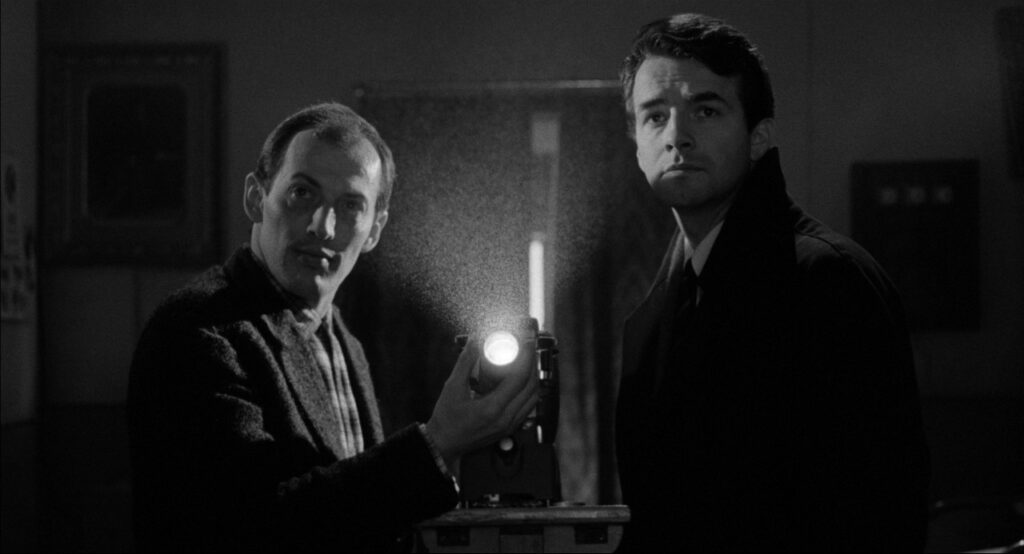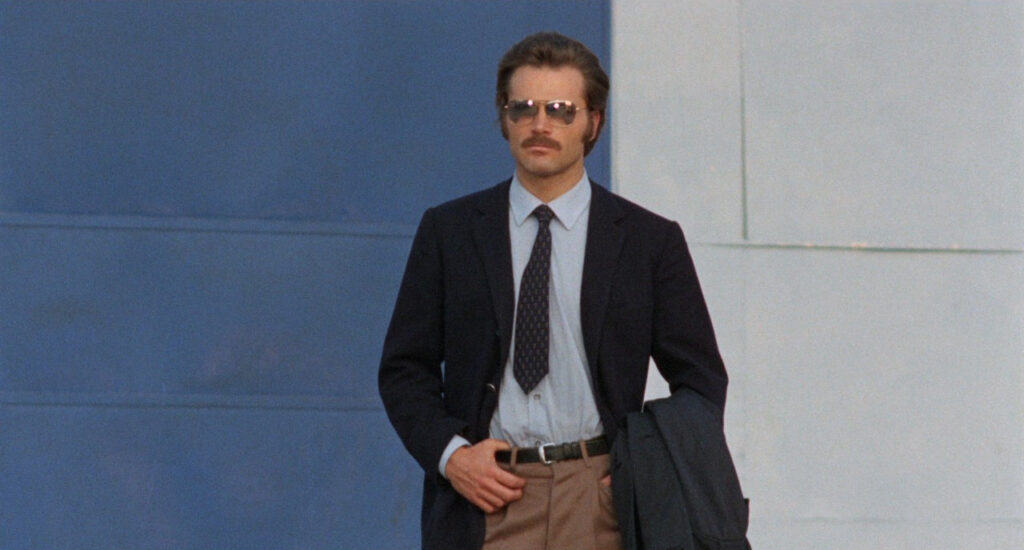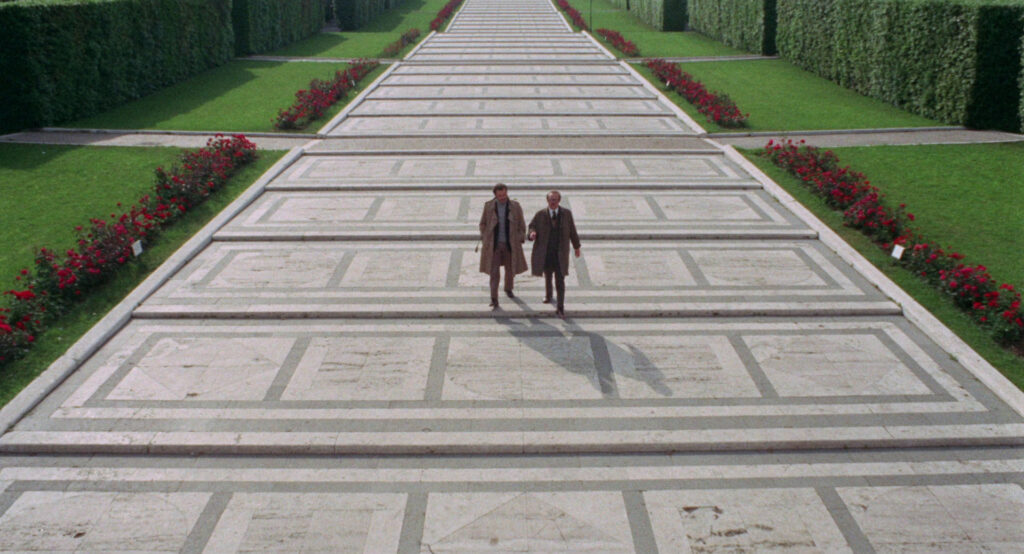A recurring theme on these Six Weeks of Halloween marathons has been the continuing exploration of the seemingly endless throngs of Italian Giallo films. Whether it be obscure, forgotten examples, movies from a specific year, a focus on directors, actresses (other actresses), or just random selections, I’ve watched a bunch of these movies but have only really begun to scratch the surface. As such, in prepping this year’s themes, I had one film already on my radar, and I noticed that it was part of this handsome Giallo Essentials (Red) collection from Arrow (physical media: also a common theme of the 6WH). As a collection, it actually covers the evolution of the Giallo pretty well, so let’s pour some J&B into a fucking highball glass and dive in:
The Six Weeks of Halloween: Week 2 – Giallo Essentials
- The Simpsons: Treehouse of Horror XX: Dial “M” for Murder or Press “#” to Return to Main Menu (Disney+)
- Blood and Black Lace (trailer)
- Here’s Your Problem… (Robot Chicken)
The Possessed – A depressed writer visits a resort with the intention of finishing a book, but really it’s to reconnect with a woman he was infatuated with… a woman who worked at the resort. However, it appears she died under mysterious circumstances while he was away, and he must untangle a web of familial intrigue and jumbled memories to get to the truth.

This 1965 entry is an early example of the Giallo, actually more of a proto-Giallo that incorporates some tropes from Mario Bava’s earlier The Girl Who Knew Too Much (1963, arguably the first “official” Giallo) or Blood and Black Lace (1964). Indeed, it feels more like an arthouse noir movie than a Giallo. Sure, the visiting writer unravels a seaside town murder premise is a surprisingly common one, the mystery is somewhat lurid and seemingly (but not really) convoluted, and there are other hallmarks of the genre like a short glimpse of a gloved hand wielding a straight razor. But it’s like the volume is turned down on all of these elements.
There is much more focus on fuzzy memories and dreamlike sequences, black and white photography, and arthouse ennui. Think of the deliberate, mannered films of Fellini and Antonioni more than the excesses of Argento or Fulci. This doesn’t make the movie dull or anything, but it’s certainly not the cavalcade of schlock that a lot of Giallo movies embrace. Director Luigi Bazzoni clearly has a good eye, and the stark, contrasting visuals of the black and white photography are striking, particularly when it comes to scenes that take place near the glimmering lake.
The dreamlike nature of the plot, as our protagonist frequently has daydreams or flashbacks or hallucinations or just straight up nightmares, has you wondering if any of what you’re watching is actually happening. The editing sometimes emphasizes this uncertainty, as you move from one conventional scene to a dream sequence and back again without much fanfare. Sometimes you get the standard jolting awake in bed to indicate a dream sequence, but the transition isn’t always that clear. That sort of disorientation is clearly part of the point, emphasizing the unreliability of memory and how an event can spiral out of control. It’s a difficult line to walk, but the artistry on display here is up to that task.
It’s an early, transitional example of the genre that does illuminate how the Italian cinema scene was evolving at the time. It’s probably not the best introduction to Giallo movies, but the elements are all there, even if they are somewhat restrained. **1/2
- King in the Box (short)
- Deep Red (trailer)
- The Bird with the Crystal Plumage (trailer)
The Fifth Cord – A journalist investigates a series of attacks and murders that seemingly implicate him as the killer. Now this is a quintessential Giallo film with all the trimmings.
The Giallo sub-genre had been emerging in the 60s, but really took off with the release of Dario Argento’s The Bird with the Crystal Plumage in 1970. This movie, which was also directed Luigi Bazzoni and came out in 1971, owes a big debt to Argento, and it represents a fascinating contrast with The Possessed. Lots of similar elements, but the volume is turned up to 11 here.

All the standard boxes are checked: The gloved killer, fisheye POV shots, people chugging J&B Whisky, red herrings galore, a Hitchcockian “wrong man” premise, Franco Nero sporting a bitchin pornostache, a swanky Ennio Morricone score, and exceptional cinematography from the Oscar winning cinematographer of Apocalypse Now (amongst many others). Everything you could possibly want out of a Giallo is here, with the possible exception of an overly convoluted story with an almost nonsensical conclusion (and alright, maybe the title could be a tad more baroque). For a film with such a dense list of characters and relationships, it’s got a pretty conventional plot, but they compensate with the aforementioned visual flare.
You know how noir films are infamous for using Venetian blinds to symbolize the bars of imprisonment? Well The Fifth Cord amps that up to the nth degree – there are an absurd amount of shots in this film that emphasize the window blinds or other symbolic bars that surround and imprison the characters. One other thing that struck me about watching these films this weekend was how they contrast with the current overuse of greenscreen techniques – it’s a real treat to watch a movie that is clearly shot on location. And not just any location; these are all visually striking and memorable locations. These also play into the use of extreme wide shots, emphasizing the isolation of the characters.

This is clearly the best film in the Arrow set, and it’s a pretty great example of the genre. It’s certainly not my favorite Giallo, but it still rips. ***
- Lotion in the Basket (Robot Chicken)
- Your Vice Is a Locked Room and Only I Have the Key (trailer)
- Bay of Blood (trailer)
The Pyjama Girl Case – In Australia, a retired police inspector investigates a half-burned body found on the beach. Also, a woman named Glenda sleeps around, gets married, continues to sleep around, and complications ensue. How will these two stories connect?
By 1977, the Giallo was starting to flame out. Still plenty of examples being released, but the formula had grown stale and more and more films were deviating considerably. This is a pretty good example of that sort of thing, and it’s a movie that takes some pretty big swings. In particular the seemingly disconnected dueling plots are interesting, even if it does mess with the pacing a bit.

The procedural bits are reasonably well done, especially Ray Milland’s performance as the grumpy inspector who’s seen it all coming out of retirement for one last case. The plot surrounding Glenda harkens back to a more arthouse character, albeit one with a much more horny and lurid bent than most such things. There are two big twists in the film, one of which happens midway through the movie and is genuinely shocking, while the other was not entirely unexpected but represents a worthwhile conclusion.
Along the way, there are several frankly bizarre sequences. The most famous sequence in the film is when the police, still unsure of the murder victim’s identity, put her nude, partially burned body on display for the public. It’s almost portrayed like an art exhibit, and the film is clearly trying to indict its audience for its lurid curiosity in watching movies like this. Or it just wants to be as sleazy and ludicrous as possible. This, in turn, speaks to the objectification that Glenda receives on her side of the plot. Another infamous sequence is when some guy hires a prostitute, says his nephew is too young to participate, but invites him along to watch anyway. So gross it’s almost hilarious. I don’t want to make too much of this film’s commentary on misogyny because there’s so much of it on display that it becomes an almost have your cake and eat it too situation.
Usually when someone says that a film takes “big swings”, the “and missed” is implied… and I don’t know that this is really any different. Maybe they made contact, but it was a foul ball? Or something? It’s one of those interesting failure type movies that could go either way. I’m not entirely sure it belongs in a “Giallo Essentials” set, but I’m also glad I watched it and there’s a lot to chew on here. **1/2
As usual, the Arrow discs are jam packed with special features, including informative commentary tracks (I have not watched/listened to all of them, but what I sampled was good), solid new interviews with experts and critics, and great looking transfers. I continue to be fascinated by the sub-genre, and you’ll probably see at least one weekly theme every year for a while (and Arrow has several other Giallo Essentials sets, hmmm). Anywho, stay tuned, we’ve got some recent releases coming up on Wednesday…
The Pyjama Girls Case sounds delightfully nuts. I love it when work horse American actors like Ray Milland show up in exploitation films. (Otherwise known as the Cameron Mitchell/Jack Palance career path.)
It certainly has its crazy elements, though there’s plenty to wade through before you get there. Milland is definitely my favorite part of the movie, but without getting into spoilers, I wish he was in it more.